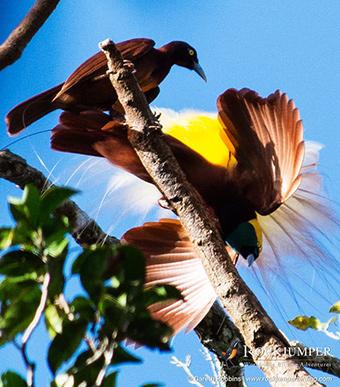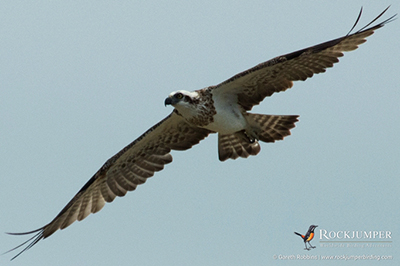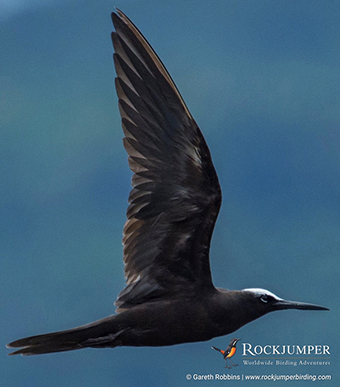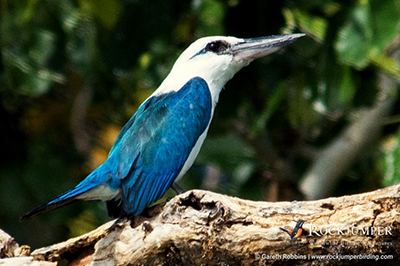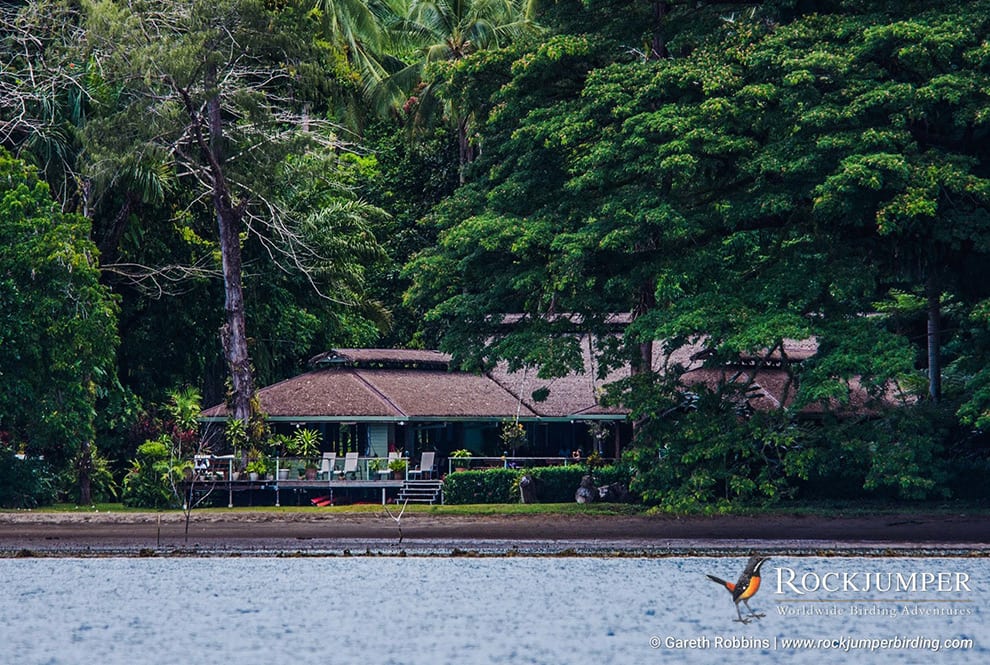
Of all the world’s birding tours destinations, Papua New Guinea would have to rank as the most fascinating and exotic. New Guinea, the planet’s second largest island, was the last inhabited landmass to be explored by Europeans. These virtually untouched forests come alive with the sights and sounds of dazzling birds with iridescent colours and elaborate plumes in one of the most astonishing exhibits of the natural world. Rockjumper’s tours here continue to impress: what follows is a recount of one of our most recent expeditions there.
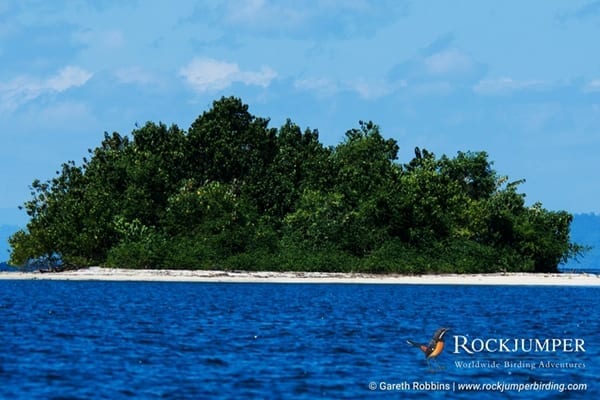
Port Moresby
The Pacific Adventist University is situated in Port Moresby – capital of Papua New Guinea. This was our first birding spot we visited on the first day of our Papua New Guinea – Birding in Paradise III tour. The university offers a few small ponds, where a wide variety of waterbirds are possible: such as Pacific Black Duck, Wondering and Plumed Whistling Ducks, Grey Teal, Masked Lapwing, Raja Shelduck, Dusky Moorhen, Australian Swamphen, Hardhead and Comb-crested Jacanas.
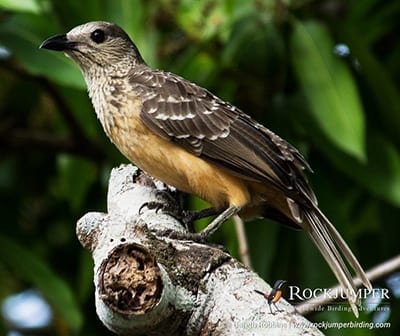
The university also offers many open areas, where one can see Yellow-tinted and Rufous-banded Honeyeaters, Australian Fig Birds and the ever-present Willie Wagtail. There is also a reliable spot for Papuan Frogmouths and Nankeen Night Herons too! Other birds that we saw were White-breasted Woodswallows, the beautiful Rainbow Bee-eater, and Sacred and Forest Kingfishers. One of the more sought-after birds on the property is the Fawn-breasted Bowerbird, and we were also able to see one of the two know bowers on the university grounds. Fawn-breasted Bowerbirds like to collect green fruits to decorate the two walled “Avenue” shaped bower. This was a great way to start the tour!
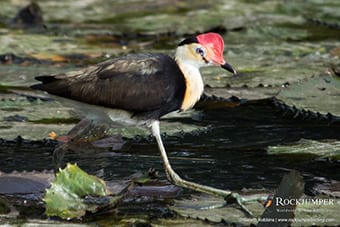
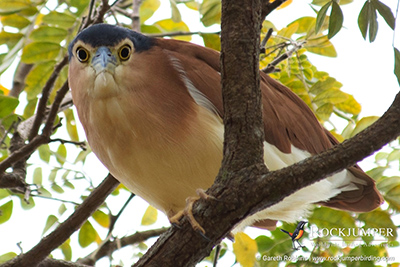
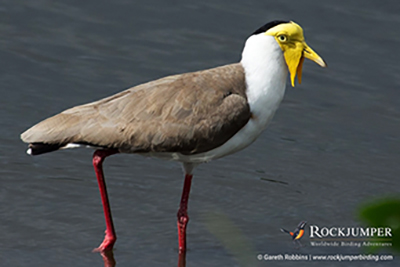
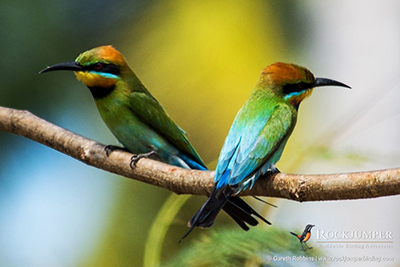
The Fly and Elevala Rivers
We spent two days birding along the Fly and Elevala Rivers located near the inland port of Kiunga. One of the birds we were very fortunate to see was the Great-billed Heron sitting quietly in the trees along the river. Great-billed Herons can get up to 115cm tall and weigh around 2.5 kilograms. Their diet consists mainly of fish, which are caught when standing in the water. This heron is considered a scarce resident of mangroves, rivers and lagoons. For some clients, this was the top bird of the trip for them.
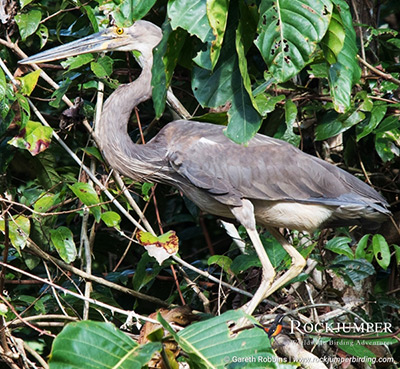
Another highlight and one of the most eagerly anticipated birds was the Southern Crowned Pigeon, which has become increasingly difficult to find when travelling along the Elevala River. In the last few minutes of daylight, our local guide, Eddie, stopped to examine a dark blob sitting in the trees.
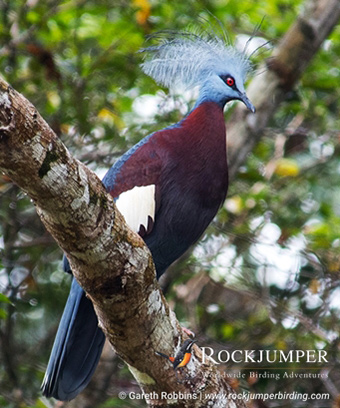
We eagerly turned the boat around, hoping a Southern Crowned Pigeon, and Eddie was spot on! There were two of these Pigeons sitting quietly in the trees. Southern Crowned Pigeons can reach around 79cm – which is double the size of pigeons in South Africa! Eddie explained to us that these birds will spend the day feeding on the ground and then roost in the trees in the evening. Another top bird for the trip.
Another great spot we visited in the Kiunga area was Kilometer 17, and here we had excellent views of King Bird-of-Paradise. The group also spent close to an hour watching the male Greater Birds-of-Paradise do their late-afternoon display at their regular lek site in the top of the forest canopy.
New Britain
The New Britain Extension was the perfect way to end the last few days of the birding tour. We spent four nights at the stunning Walindi Plantation Resort, which served as a great position to visit the various birding spots on the western part of the island. One of the main highlights of the extension was our boat trip to the Malu Malu and Restorf Islands. We were very fortunate to see most of the Supertramp species, such as Mackinlay’s Cuckoo-Dove, Island Imperial Pigeon, Mangrove Golden Whistler, Sclater’s Myzomela, Island Monarch and the Stunning Beach Kingfisher. On the boat trip back, we managed to get some fantastic looks at Black Noddys, Eastern Osprey and Black-naped Terns!
